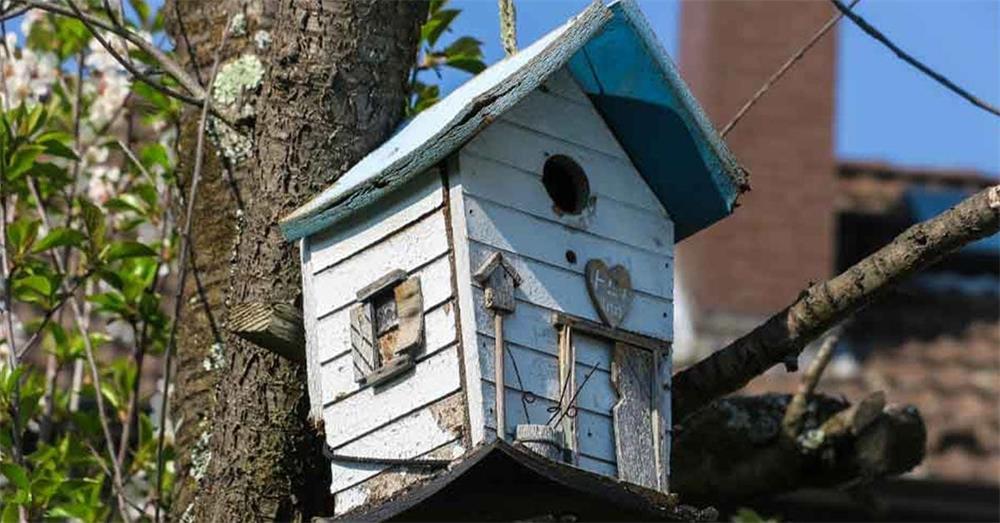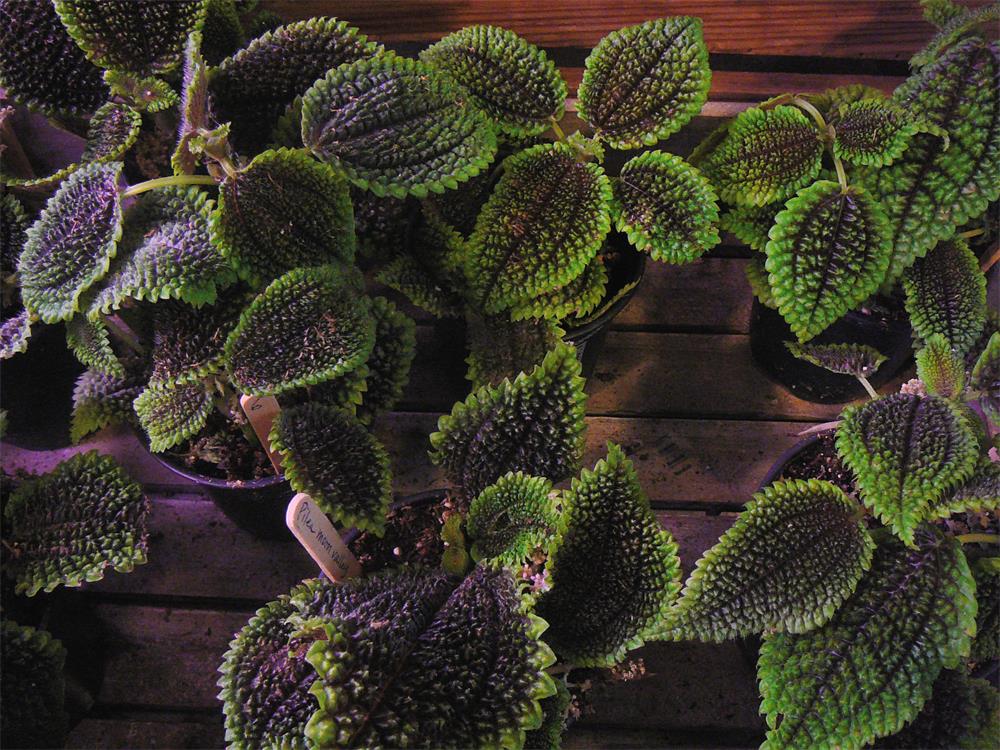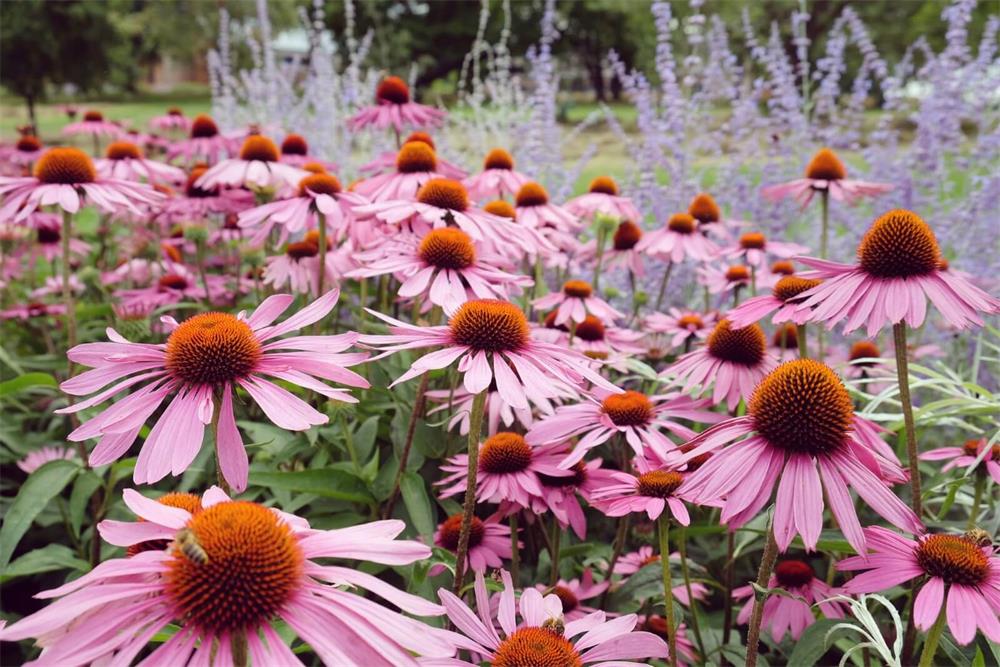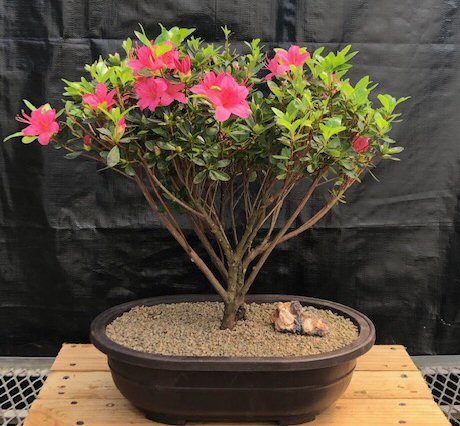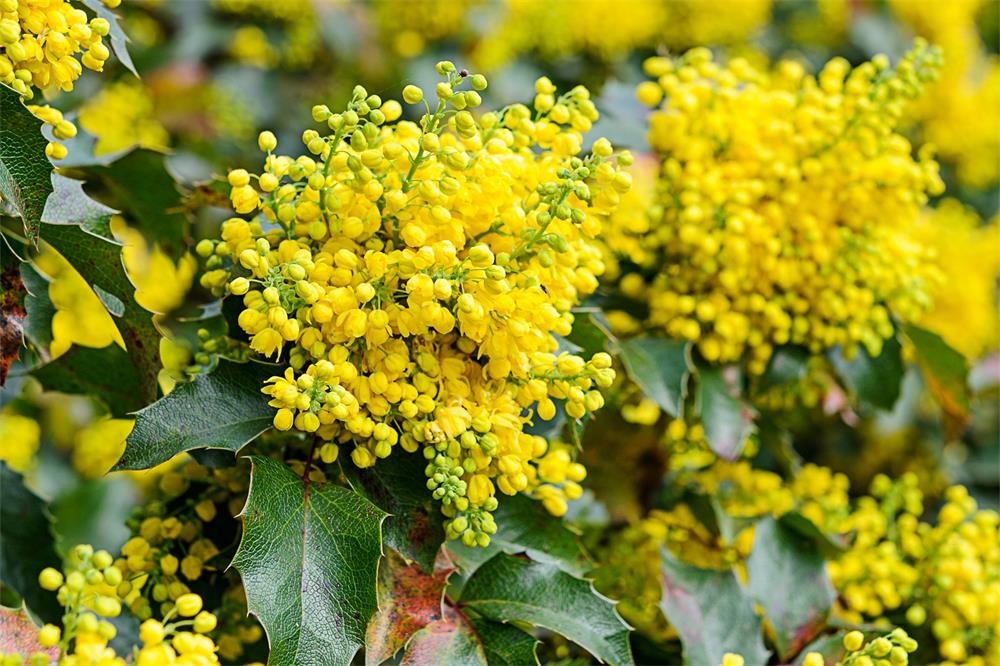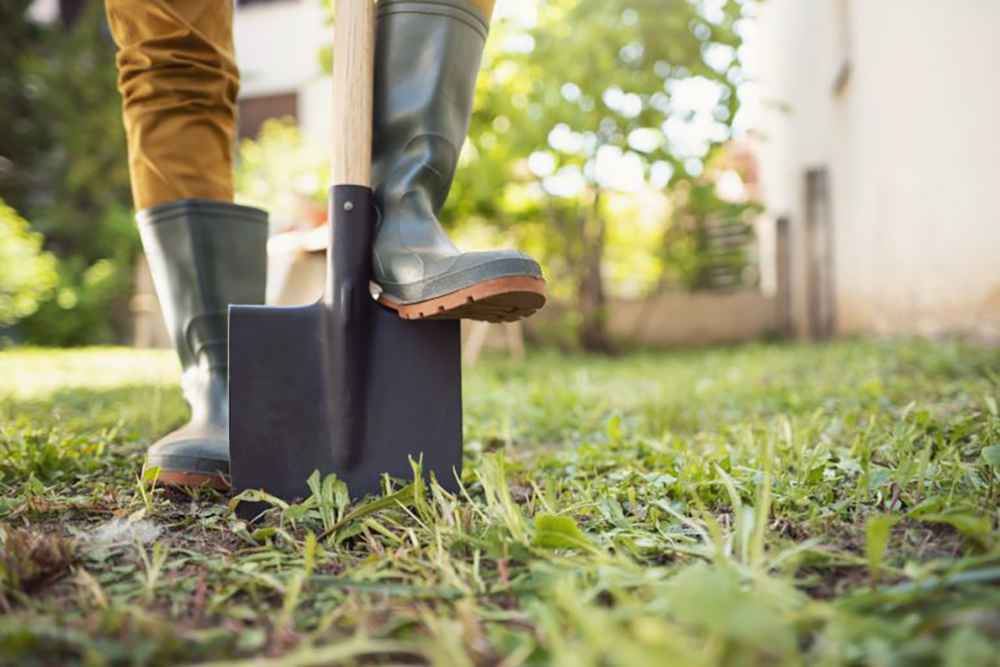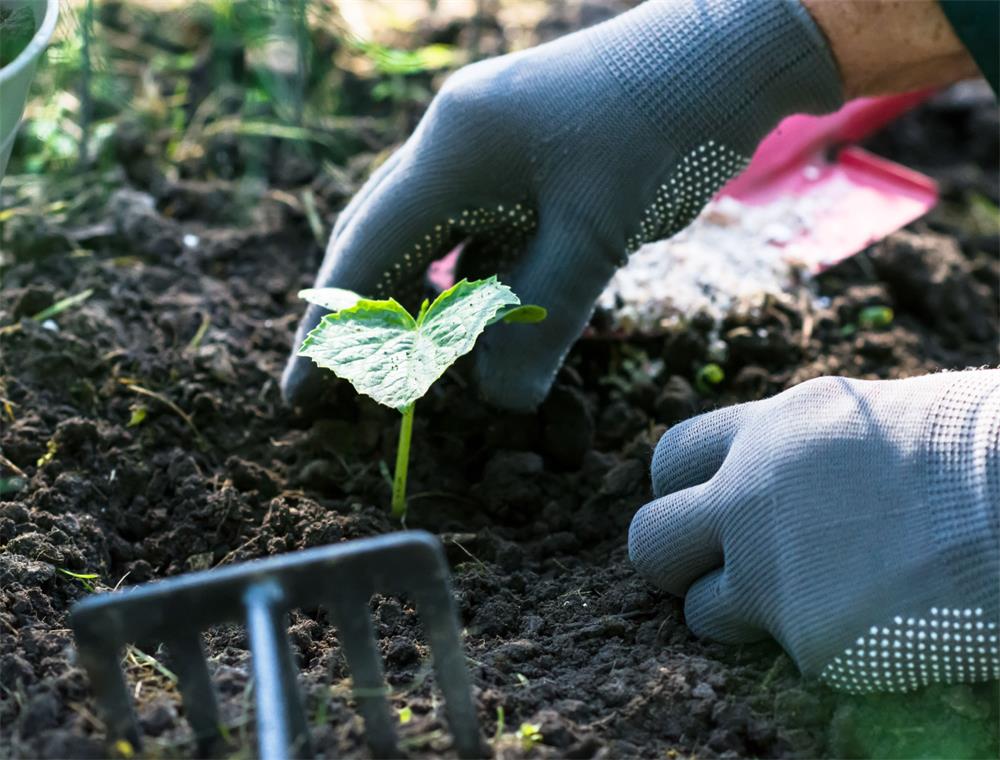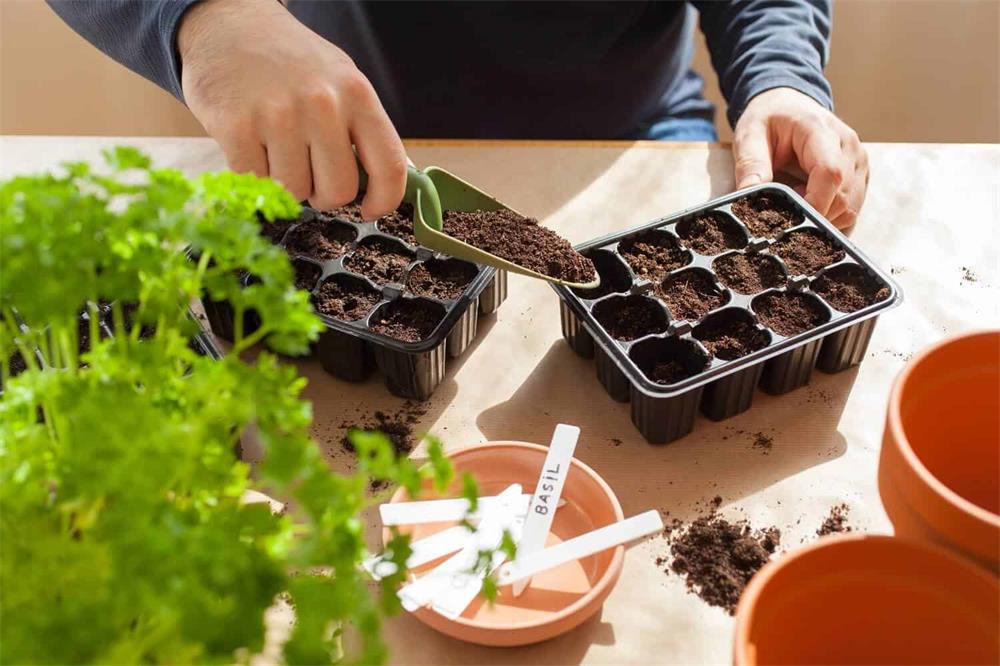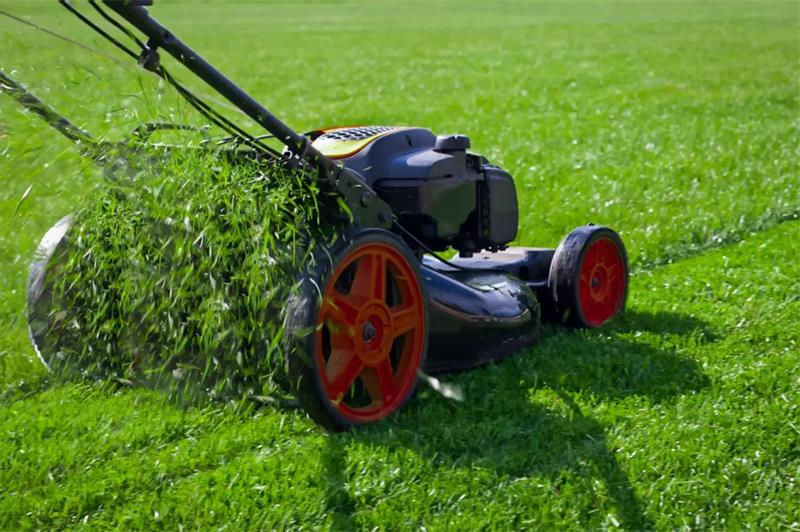
Spring is a time of renewal and growth, and your lawn is no exception. After a long winter, your grass might need some extra attention and care to restore its health and beauty. Spring lawn care is not only important for the appearance of your lawn, but also for its long-term vitality and resilience.
Depending on your climate and region, the timing and tasks of spring lawn care might vary. However, there are some general steps that you can follow to get your lawn ready for the new season. Here are some tips and methods you can try:
- Rake thoroughly. The first thing you need to do to prepare your lawn for spring is to rake it well. Raking will help you remove any fallen leaves, twigs, or debris that might have accumulated over the winter. It will also help you break up any thatch that is deeper than 1/2 inch. Thatch is the layer of dead grass and organic matter that lies between the soil and the green grass. A thin layer of thatch can be beneficial for your lawn, as it can retain moisture and nutrients. However, a thick layer of thatch can prevent water, air, and fertilizer from reaching the roots of your grass, and also create a breeding ground for pests and diseases.
Raking will also help you loosen up any matted patches of grass that might have been caused by snow mold or other lawn diseases. Snow mold is a fungal infection that occurs when snow covers the lawn for a long time. It can make the grass blades stick together and form gray or pink patches. Raking will help you aerate these patches and allow new grass to grow through them.
When raking your lawn, use a flexible leaf rake that can gently but effectively remove unwanted material. Avoid raking too hard or too early in the season, as this can damage the tender and vulnerable grass in early spring. Wait until your lawn starts to green up and show signs of active growth before raking.
- Aerate if needed. Another step you might need to take to prepare your lawn for spring is to aerate it. Aeration is the process of creating small holes in the soil to improve its drainage and oxygenation. Aeration can help you relieve soil compaction, which is a common problem for lawns that receive heavy traffic or have clay soil. Soil compaction can reduce the space between soil particles and make it harder for water, air, and nutrients to penetrate the soil and reach the roots of your grass.
Aeration can also help you reduce thatch buildup, as it can break up the organic matter and allow it to decompose faster. Aeration can also stimulate root growth and improve the overall health and vigor of your lawn.
To aerate your lawn, you can use a manual or powered lawn aerator that can create small plugs or spikes in the soil. You can rent a lawn aerator at a hardware store or a garden center, or hire a professional service to do it for you. You can also use a hand aerator or a garden fork to create holes in smaller areas.
The best time to aerate your lawn is in late spring or early summer, when your grass is actively growing and can recover quickly from the disturbance. Avoid aerating your lawn too early in spring, as this can expose the soil to weed seeds that might germinate before your grass does. Also avoid aerating your lawn when it is too wet or too dry, as this can damage the soil structure and cause more compaction.
- Test and amend the soil. Another important step for spring lawn care is to test and amend the soil. Testing your soil will help you determine its pH level and nutrient content, which are essential factors for growing healthy grass. The pH level indicates how acidic or alkaline your soil is, while the nutrient content indicates how much nitrogen, phosphorus, potassium, and other minerals your soil has.
The ideal pH level for most types of grass is between 6.0 and 7.0, which is slightly acidic to neutral. If your soil is too acidic (below 6.0), it can limit the availability of some nutrients and make your grass more susceptible to diseases and pests. If your soil is too alkaline (above 7.0), it can cause some nutrients to become unavailable or toxic to your grass.
The ideal nutrient content for most types of grass depends on various factors, such as the type of grass, the climate, the soil type, and the desired appearance and performance of your lawn. Generally, grass needs more nitrogen than other nutrients, as nitrogen promotes green and lush growth. However, too much nitrogen can also cause problems, such as excessive growth, thatch buildup, disease susceptibility, and environmental pollution.
To test your soil, you can use a home soil test kit that you can buy at a garden center or online, or send a soil sample to a local extension service or a soil testing laboratory. A home soil test kit can give you a quick and approximate result of your soil pH and nutrient levels, while a professional soil test can give you a more accurate and detailed analysis of your soil condition and recommendations for improvement.
To amend your soil, you can use different products or materials to adjust its pH and nutrient levels according to the results of your soil test. To raise the pH of acidic soil, you can use lime or wood ash. To lower the pH of alkaline soil, you can use sulfur or peat moss. To add nutrients to your soil, you can use organic or synthetic fertilizers that contain the appropriate amounts and ratios of nitrogen, phosphorus, potassium, and other minerals. You can also use organic matter, such as compost or manure, to enrich your soil with nutrients and improve its texture and water retention.
When amending your soil, follow the instructions and recommendations on the product labels or from the soil test report. Apply the amendments evenly and lightly over your lawn, and water them well to help them dissolve and penetrate the soil. Avoid applying too much or too little of any amendment, as this can cause imbalance or deficiency in your soil and harm your grass.
- Fertilize moderately. Fertilizing your lawn is another step that you might need to take to prepare it for spring. Fertilizing your lawn can help you provide it with the nutrients it needs to grow strong and healthy. However, fertilizing your lawn is not always necessary or beneficial, depending on your soil condition and grass type.
If your soil is already rich in nutrients from organic matter or previous fertilization, you might not need to fertilize your lawn at all. If your grass is a cool-season type that grows mostly in spring and fall, such as Kentucky bluegrass or perennial ryegrass, you might only need to fertilize your lawn once in late spring or early summer. If your grass is a warm-season type that grows mostly in summer, such as Bermuda grass or zoysia grass, you might need to fertilize your lawn twice in spring and summer.
The best way to determine if and when you need to fertilize your lawn is to do a soil test and follow its recommendations. You can also observe your lawn’s appearance and performance throughout the season. A healthy lawn should have a relatively light shade of bright green color. A lawn that is too dark green might have been over-fertilized with nitrogen. A lawn that is yellowish or pale green might have a nutrient deficiency.
When fertilizing your lawn, choose a fertilizer that matches your grass type and soil condition. You can use organic or synthetic fertilizers that have different formulations and release rates. Organic fertilizers are made from natural materials that are less concentrated but more environmentally friendly than synthetic fertilizers. Synthetic fertilizers are made from refined chemicals that are more concentrated but more potentially harmful than organic fertilizers.
You can also choose between granular or liquid fertilizers that have different application methods. Granular fertilizers are solid particles that you can spread over your lawn with a spreader or by hand. Liquid fertilizers are solutions that you can spray over your lawn with a sprayer or a hose attachment.
When applying fertilizer to your lawn, follow the instructions on the product label carefully. Apply the fertilizer evenly and lightly over your lawn, and water it well to help it dissolve and reach the roots of your grass. Avoid applying fertilizer too early or too late in the season, as this can cause weed growth or frost damage. Also avoid applying fertilizer too much or too often as this can cause excessive growth, thatch buildup, disease susceptibility, and environmental pollution.
- Control weeds. Controlling weeds is another step that you might need to take to prepare your lawn for spring. Weeds are unwanted plants that compete with your grass for space, light, water, and nutrients. Weeds can also affect the appearance and quality of your lawn, as they can create patches of different colors, textures, and heights. Weeds can also harbor pests and diseases that can harm your grass.
There are two main types of weeds that can infest your lawn: broadleaf weeds and grassy weeds. Broadleaf weeds are plants that have broad and flat leaves, such as dandelions, clover, or plantain. Grassy weeds are plants that have narrow and blade-like leaves, such as crabgrass, quackgrass, or nutsedge.
There are two main methods of controlling weeds in your lawn: mechanical and chemical. Mechanical methods involve physically removing or killing weeds by hand or with tools. Chemical methods involve applying herbicides that kill or prevent the growth of weeds.
The best way to control weeds in your lawn is to prevent them from growing in the first place. You can do this by maintaining a healthy and dense lawn that can outcompete and crowd out the weeds. You can also use mulch or landscape fabric to cover the bare spots in your lawn where weeds might germinate.
If you already have weeds in your lawn, you can use mechanical or chemical methods to get rid of them. Mechanical methods are more labor-intensive but more environmentally friendly than chemical methods. You can use a weeding tool or a knife to dig out the weeds by their roots, or use a flame weeder or boiling water to burn or scald the weeds. Chemical methods are more convenient but more potentially harmful than mechanical methods. You can use selective or non-selective herbicides that target specific types of weeds or kill all plants indiscriminately.
When controlling weeds in your lawn, choose the method that suits your situation and preference. Use mechanical methods for small areas or isolated weeds, and chemical methods for large areas or persistent weeds. Follow the instructions on the product label or from the manufacturer when using herbicides. Apply the herbicides evenly and lightly over the affected areas, and avoid spraying them on your grass or other plants. Avoid applying herbicides too early or too late in the season, as this can reduce their effectiveness or cause damage to your lawn.
- Mow properly. Mowing your lawn is another step that you might need to take to prepare it for spring. Mowing your lawn can help you maintain its height and appearance, as well as promote its health and growth. Mowing your lawn can also help you control weeds and pests, as it can remove their flowers and seeds.
The best way to mow your lawn is to follow some basic guidelines that can vary depending on your grass type and condition. Here are some general tips for mowing your lawn:
- Mow when your grass is dry. Mowing wet grass can cause clumping and clogging of the mower blades, as well as uneven cutting and spreading of diseases.
- Mow when your grass is tall enough. Mowing too soon or too often can stress your grass and make it weak and susceptible to diseases and pests.
- Mow at the right height. Mowing too low or too high can affect the health and appearance of your lawn. Mowing too low can expose the soil to sunlight and weed seeds, as well as reduce the root depth and water retention of your grass. Mowing too high can create a dense canopy that blocks air circulation and light penetration, as well as harbor pests and diseases.
- The ideal mowing height depends on your grass type and season. Generally, cool-season grasses should be mowed at 2 1/2 to 3 1/2 inches in spring and fall, and at 3 to 4 inches in summer. Warm-season grasses should be mowed at 1 to 2 inches in spring and summer, and at 2 to 3 inches in fall.
- Mow with sharp blades. Mowing with dull blades can tear and damage the grass blades, making them brown and susceptible to diseases and pests. Sharpen your mower blades regularly or replace them when they are worn out.
- Mow in different directions. Mowing in the same direction every time can cause the grass to lean and grow unevenly. Change your mowing pattern every time you mow to avoid creating ruts and compaction.
- Mow with a mulching mower. A mulching mower is a type of mower that cuts the grass clippings into fine pieces and returns them to the lawn. This can help you recycle the nutrients and organic matter from the clippings, as well as reduce the need for fertilizing and watering your lawn.
- Water wisely. Watering your lawn is another step that you might need to take to prepare it for spring. Watering your lawn can help you provide it with the moisture it needs to survive and thrive. However, watering your lawn is not always necessary or beneficial, depending on your climate and soil condition.
If your region gets enough rainfall in spring, you might not need to water your lawn at all. If your soil is sandy or well-drained, you might need to water your lawn more frequently than if your soil is clayey or poorly drained. If your grass is drought-tolerant or dormant, you might need to water your lawn less often than if your grass is water-loving or active.
The best way to water your lawn is to follow some basic guidelines that can vary depending on your lawn type and condition. Here are some general tips for watering your lawn:
- Water when your lawn needs it. Watering too much or too often can cause waterlogging and leaching of nutrients, as well as encourage weed growth and disease development. Watering too little or too rarely can cause wilting and browning of grass, as well as reduce root depth and drought tolerance.
- The best way to determine if your lawn needs water is to observe its appearance and feel its soil. A thirsty lawn will show signs of stress, such as fading color, curling blades, or footprints that remain after walking on it. Dry soil will feel hard and crumbly when you squeeze it between your fingers.
- Water deeply and infrequently. Watering deeply means applying enough water to wet the soil to a depth of 6 to 8 inches, which is where most of the grassroots are located. Watering infrequently means applying water only when the soil is dry to a depth of 4 to 6 inches, which is where most of the grass roots absorb water.
- The amount and frequency of watering depending on your soil type and weather condition. Generally, most lawns need about 1 inch of water per week in spring and summer, and less in fall and winter. Sandy soils need more frequent but less amount of watering than clayey soils. Hot and windy weather conditions need more frequent and more amount of watering than cool and calm weather conditions.
- Water early in the morning or late in the evening. Watering early in the morning or late in the evening can help you reduce water loss from evaporation and runoff, as well as prevent fungal diseases from developing on wet grass overnight.
- Water evenly and slowly. Watering evenly means applying water uniformly over the entire lawn area, without leaving any dry spots or creating any puddles. Watering slowly means applying water at a rate that the soil can absorb without running off or pooling on the surface.
- The best way to water evenly and slowly is to use a sprinkler system that has a timer and a rain sensor. A sprinkler system can help you automate and regulate the watering process, as well as adjust it according to the weather condition. A timer can help you set the duration and frequency of watering, while a rain sensor can help you stop or skip watering when it rains.
These are some of the steps that you can take to care for your lawn in spring. By following these steps, you can help your lawn recover from winter stress and prepare for summer growth. You can also enjoy a green and healthy lawn throughout the season.



